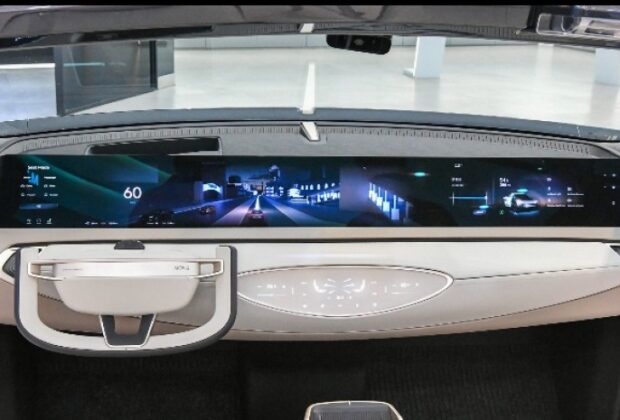The M.VICS, a cutting-edge cockpit meticulously crafted by Hyundai Mobis, which has combined its innovative display technologies to establish a new benchmark for future digital cockpits, is more than meets the eye.
The global competitiveness in this industry has increased because to the rapid advancements in electrification and autonomous driving technologies. The most recent iteration of Hyundai Mobis’ next-generation integrated driver’s system, M.VICS 5.0, was created to help the business stay ahead of competitors throughout the world.
Since its initial release in 2021, the M.VICS series has undergone five versions as part of the company’s ongoing effort to improve and expand upon convenience, safety, and efficiency.
The newest M.VICs 5.0 look to be a single display, but in reality, they are a combination of five display panels, each with a unique function. As the dashboard, the 27-inch primary screen shows media and navigational information. A 7-inch screen shows vehicle status information, while a 12.3-inch screen is dedicated to the passenger. A projection display with touch and haptic feedback, along with button controls, give the cockpit an upscale appearance.To provide unparalleled customised ease of use, every display can be moved and adjusted to suit different settings and requirements. This future cockpit has intelligent measures to protect the health and safety of drivers and passengers in addition to these displays. This features anti-motion sickness lighting, sleepiness and inattention monitoring technology, and many airbags for safety.
The goal of the recently released M.VICS 5.0 is to bring together several display technologies. From a design standpoint, it creates a continuous, borderless, wide-screen cockpit by integrating the whole front panel from the left pillar of the driver’s seat to the right pillar of the passenger seat. This features a feature that modifies the display panel’s dimensions and angle based on the driving mode.
Five display panels for M.VICS 5.0
The M.VICS 5.0 has five display panels: a 12.3-inch high-definition screen for the passenger, a 7-inch screen showing different vehicle status information, button controls, and a 27-inch primary screen for the dashboard, navigation, and media content. This are all seamlessly connected to provide a roomy and airy driving atmosphere. For extra convenience, a touch and haptic feedback projection display has been incorporated beneath the huge screen.








